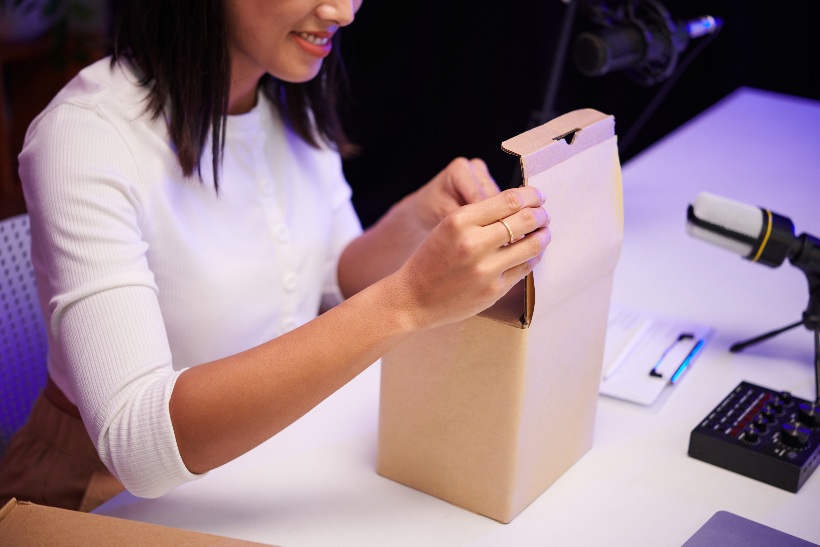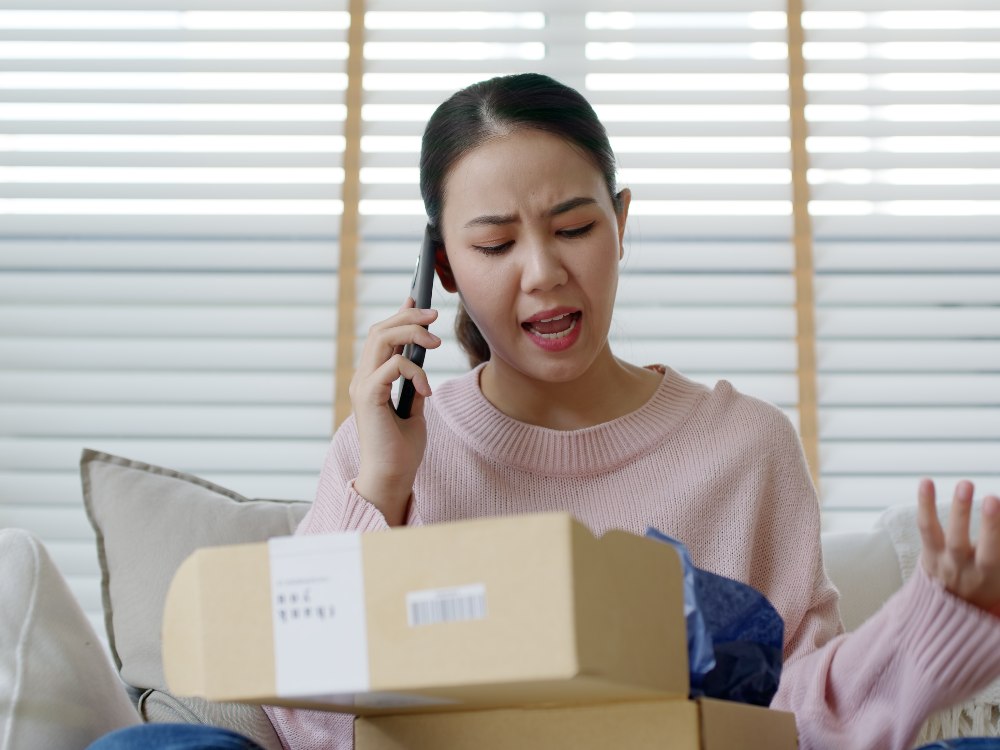Your ecommerce post-purchase experience begins the moment a customer clicks "buy", yet it's the most overlooked phase of the customer journey. While most businesses obsess over conversion rates and acquiring new customers, they're missing a critical opportunity to transform one-time buyers into loyal customers through strategic post-purchase communication.
The stakes couldn't be higher. Research reveals that 96% of high-effort customer experiences drive customer disloyalty, whilst 85% of Aussie shoppers across all generations say a reliable delivery experience will be the most important factor in trusting online retailers in the next 5 years. Understanding how customers perceive this critical phase helps businesses create a great post-purchase experience that drives loyalty.
Yet despite these compelling statistics, many customers find themselves abandoned after checkout, with businesses treating this crucial phase as an afterthought and leaving millions in repeat revenue on the table.
The Post-Purchase Black Hole: Where Customer Journey Relationships Go to Die
Why Your "Set and Forget" Approach Is Sabotaging Customer Satisfaction
The moment after checkout represents a critical juncture in the customer journey. Your customers have just committed to your brand with their hard-earned money, their excitement is at its peak, and their expectations are sky-high. This is precisely when most businesses drop the ball with their post-purchase customer experience, directly affecting customers' post-purchase behaviour and long-term brand loyalty.
Common Post-Purchase Experience Killers:
- Communication Blackouts - Customers receive order confirmation, then hear nothing for days, creating anxiety about payment processing and order status throughout the purchase process
- Unclear Delivery Expectations - No estimated arrival dates or shipping timelines leave customers guessing when their purchase will arrive
- Generic Order Tracking - Basic tracking numbers without branded experiences or proactive updates fail to maintain engagement and damage brand loyalty
- Missing Problem Resolution - When issues arise, customers can't easily find help or get quick responses to their concerns
- Abandoned Customer Journey - Treating the sale as the finish line instead of the beginning of an ongoing relationship, which negatively impacts customers' post-purchase behaviour
What Smart Businesses Do Instead:
- Proactive Communication Sequences - Automated updates at every stage keep customers informed and excited about their purchase throughout the entire purchase process
- Branded Tracking Experiences - Custom tracking pages that reinforce brand value whilst providing clear delivery information
- Accessible Customer Support - Easy-to-find help options and quick response times when customers have questions
- Value-Added Follow-Up - Educational content, usage tips, and related product recommendations that extend the relationship and build brand loyalty
- Feedback Collection Systems - Structured ways to gather customer insights that improve future experiences
More than half of shoppers (53%) say the post‑purchase phase is the most emotional part of the journey, making clear, proactive communication critical. When customers feel abandoned after their initial purchase, they're unlikely to become repeat customers, regardless of product quality. The post-purchase period becomes a missed opportunity to boost customer satisfaction and encourage future purchases.
Escape the Post-Purchase Black Hole
Don't let your customers disappear into the post-purchase void. Our order orchestration platform ensures seamless communication from checkout to delivery, whilst our end-to-end logistics solutions eliminate the gaps that cause customer anxiety - (02) 9090 4747
Communication Breakdowns That Cost You Customer Loyalty
The WISMO Epidemic and Information Vacuum That Destroys Customer Experience
"Where Is My Order?" (WISMO) inquiries plague customer support teams across Australia, representing a fundamental failure in post-purchase communication. These customer service inquiries stem from several critical breakdowns:
- Silent Order Processing - Customers receive order confirmation, but then hear nothing for days, leaving them wondering if their payment was processed correctly or if their order is being fulfilled
- Missing Shipping Notifications - Orders leave the warehouse without automated shipping confirmation emails, forcing customers to guess when their package might arrive
- Inadequate Tracking Updates - Basic tracking numbers without context or estimated delivery windows create anxiety rather than reassurance about order progress.
- Carrier Communication Gaps - Relying on unreliable third-party logistics providers to communicate directly with customers often results in missed or delayed notifications.
- No Delivery Confirmation Follow-up - Packages arrive without any branded follow-up communication, missing the opportunity to ensure satisfaction and gather feedback
The Effortless Experience research found that 96% of customers who experience high-effort interactions lose their loyalty to the brand. When customers must chase down basic information about their customer's order, they're forced into high-effort experiences that damage long-term customer relationships. Your customer support team becomes overwhelmed with preventable support requests, while customer lifetime value diminishes.
Effective post-purchase communication should keep customers informed at every stage of their journey through proactive updates and clear expectations. By implementing automated transactional emails and a branded tracking page, businesses can dramatically reduce customer support tickets while improving the overall purchase experience.
Smart ecommerce brands use this communication touchpoint to strengthen customer relationships through personalised messaging, relevant product recommendations, and loyalty program invitations. Rather than viewing post-purchase emails as mere administrative necessities, forward-thinking companies leverage these interactions to drive customer engagement and future sales.
The Delivery Disaster: When Customer Expectations Meet Reality
Unboxing Experiences That Determine Customer Retention

The physical delivery and unboxing moment represent the culmination of the customer journey, yet it's often where customer expectations are most brutally shattered. Poor packaging, delayed deliveries, and damaged products transform anticipated joy into disappointment, directly impacting customer satisfaction and repeat purchases.
Research from parcelLab indicates that companies with exceptional post-purchase experiences see 20% fewer customer service inquiries and 15% fewer complaint emails. This reduction in support requests isn't just about operational efficiency; it reflects customers who are genuinely satisfied with their purchase experience from start to finish.
Customer Feedback Integration Throughout Delivery
Customer feedback collection during the delivery phase provides invaluable insights into the online purchase experience. When customers track their orders and experience delays or issues, capturing their sentiment in real-time allows businesses to address problems proactively. Smart companies integrate feedback collection at key delivery milestones, enabling them to understand how customers perceive their service quality and make immediate improvements to future deliveries.
Branded Tracking Page Solutions for Customer Support
A branded tracking page serves as the central hub where customers track their orders while reducing pressure on customer support teams. Rather than fielding constant "where is my order" inquiries, businesses can direct customers to a comprehensive tracking portal that provides real-time updates, estimated delivery windows, and proactive notifications about any delays. This self-service approach significantly reduces customer support ticket volumes whilst maintaining transparency throughout the delivery process.
The unboxing experience extends far beyond protective packaging. Innovative brands create memorable moments through the thoughtful presentation, branded materials, and surprise elements that customers want to share on social media posts. This user-generated content becomes powerful marketing that reaches other customers and drives organic brand awareness.
However, many ecommerce brands underestimate the impact of packaging on customer perception. Generic boxes, excessive plastic, and impersonal presentation communicate low value and diminished care. In contrast, companies that invest in branded packaging and sustainable materials signal quality and consideration, encouraging customers to share their experiences and recommend the brand to others.
Turn Delivery Disasters into Delightful Experiences
Your customers deserve better than generic tracking pages and delayed deliveries. Our same-day delivery services and next-day delivery services ensure your products arrive when promised. Explore today - (02) 9090 4747
Returns and Exchanges: The Ultimate Customer Relationship Test
How Complicated Return Processes Kill Customer Service Team Effectiveness
Returns and exchanges represent the ultimate test of customer service team capabilities and brand commitment to customer satisfaction. Research reveals that 62% of customers are unlikely to re-engage with brands that provide poor or inconvenient return experiences. The ACCC’s recent sweep of 2,000 retail sites found misleading refund/returns terms, reminding brands that customer-friendly policies aren’t just best practice, they’re a legal requirement.
The difference between poor and excellent return practices can make or break customer relationships:
Leading ecommerce brands implement self-service return portals that allow customers to initiate returns quickly and track their progress throughout the process. These systems reduce the burden on customer support while providing transparency that keeps customers informed and confident in the process.
Moreover, smart businesses view returns as opportunities rather than costs. By capturing customer feedback during the return process, companies gain valuable insights into product improvements, sizing issues, and customer expectations. This data helps prevent future returns whilst demonstrating genuine care for customer satisfaction.
The Missed Opportunity: Failing to Nurture Customer Lifetime Value
From Transaction to Transformation: Building Long-Term Customer Engagement
The post-purchase period represents the most cost-effective time to drive repeat purchases and increase customer lifetime value. Acquiring new customers costs significantly more than retaining existing customers, yet many businesses miss critical opportunities during this crucial phase:
- Abandoning New Customers After Delivery - Businesses celebrate the sale but fail to nurture the relationship, leaving customers feeling forgotten once their order arrives.
- Missing Educational Opportunities - Failing to provide setup guides, usage tips, or care instructions that help customers maximise their purchase value and reduce returns, missing chances to invite customers into deeper engagement
- Ignoring Cross-Selling Windows - Not recommending complementary products when customers are most engaged and likely to make additional purchases, failing to upsell customers during peak satisfaction moments.
- Overlooking Loyalty Program Enrollment - Missing the optimal moment when customers are satisfied and most receptive to joining rewards programs or subscription services that reward loyal customers.
- Wasting Feedback Collection Timing - Failing to request reviews and testimonials when customer satisfaction is at its peak, losing valuable social proof opportunities
- Neglecting Replenishment Cycles - Not tracking when consumable products will run out, missing automatically reorder opportunities for items like supplements, skincare, or pet food, failing to remind customers about repurchase timing.
- Underutilising Customer Success Stories - Failing to encourage satisfied customers to share their experiences through user-generated content and social media posts
- Missing Store Credit Opportunities - Not offering store credit as an alternative to refunds, missing chances to retain revenue while satisfying many customers
Research demonstrates that repeat customers generate 300% more revenue than first-time customers. This statistic highlights the massive opportunity that businesses miss when they fail to optimise their post-purchase journey. The customers who have already demonstrated trust in your brand are your most valuable asset for driving sustainable growth.
Effective post-purchase strategies include educational content that helps customers maximise their purchase value, complementary product recommendations, and loyalty program invites that encourage ongoing engagement. By providing genuine value beyond the initial transaction, brands transform satisfied customers into loyal brand advocates who drive organic growth through referrals and positive reviews.
The key is timing these interactions strategically throughout the customer journey. Immediately after delivery, customers are most receptive to feedback requests and product education. Several weeks later, they may be ready for replenishment offers or complementary products. Understanding these natural engagement cycles allows businesses to provide relevant value whilst driving additional revenue.
Your Post-Purchase Stage Recovery Plan: From Broken to Brilliant Customer Service Team Support
The Step-by-Step Framework for Delivering the Best Post-Purchase Experience to Boost Customer Satisfaction

Creating the best post-purchase experience requires a systematic approach that addresses every customer touchpoint. Follow these essential steps to transform your post-purchase strategy:
- Map Your Current Customer Journey - Conduct a comprehensive audit of your existing post-purchase flow to identify gaps, friction points, and missed opportunities. Examine email sequences, delivery processes, packaging quality, and customer service interactions to understand where customers may be experiencing frustration or confusion.
- Implement Automated Email Campaigns - Set up strategic email sequences that guide customers through each stage of their post-purchase journey. Order confirmation emails should provide clear expectations and next steps, shipping notifications should include tracking information and estimated delivery dates, whilst post-delivery emails should request feedback and offer additional value through product education or related recommendations.
- Develop a Branded Tracking Page - Create a custom tracking experience that keeps customers informed while driving them back to your website for additional engagement opportunities. Rather than directing customers to unreliable third-party carrier websites, choose a trustworthy third-party logistics provider. Alternatively, you can maintain control over the experience while creating touchpoints for cross-selling and brand reinforcement. Allow customers to easily track their orders while discovering complementary products.
- Establish Clear Performance Metrics - Track email open rates, click-through rates, customer support ticket volumes, return rates, and repeat purchase behaviour. These metrics provide actionable insights for continuous improvement whilst demonstrating the ROI of post-purchase investments.
- Train Your Customer Service Team - Educate your support team to view every customer interaction as an opportunity to strengthen customer relationships. Provide them with tools and authority to resolve customer queries quickly, whilst gathering valuable customer feedback that improves the overall customer experience. Empower customer service agents to surprise and delight customers when appropriate, creating memorable experiences that drive loyalty. Cloud fulfilment solutions provide the flexibility to scale during peak periods whilst maintaining consistent service quality across all customer segments.
Stop Leaving Money on the Table Post-Purchase
Every unfulfilled order is a missed opportunity for repeat business. Our inventory forecasting and pick and pack solutions ensure you never disappoint customers with stockouts. Get in touch with us today - (02) 9090 4747
From Cost Centre to Profit Driver: Your Post-Purchase Transformation Awaits
The post-purchase experience isn't just about customer service; it's about creating a sustainable competitive advantage that drives customer retention, reduces acquisition costs, and builds long-term business value. Companies that excel in post-purchase customer experience see measurable improvements in customer lifetime value, reduced customer service inquiries, and increased repeat purchases.
The transformation from viewing post-purchase as a cost centre to recognising it as a profit driver requires strategic thinking and consistent execution. Every interaction after the initial purchase represents an opportunity to strengthen customer relationships, gather valuable feedback, and drive additional revenue through thoughtful recommendations and loyalty programs.
Forward-thinking ecommerce brands understand that the customer journey doesn't end at checkout; it evolves into an ongoing relationship built on trust, value, and exceptional experiences. By implementing the strategies outlined in this framework, businesses can transform their post-purchase phase from a source of customer service tickets into a powerful engine for sustainable growth.
The question isn't whether you can afford to invest in post-purchase experience improvements; it's whether you can afford not to. With customers having more choices than ever before, the brands that survive and thrive will be those that create remarkable experiences at every stage of the customer journey, especially in the critical post-purchase period where loyalty is won or lost.
